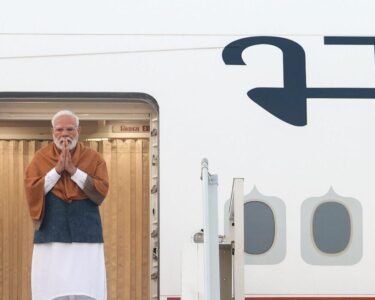The Board of Control for Cricket in India (BCCI) is preparing for a new era of leadership by adopting a split captaincy model. Instead of one individual carrying the burden of leading India in all three formats, the workload will now be divided. This move is designed to extend the careers of senior players like Rohit Sharma while creating opportunities for the next generation of leaders. With India’s international calendar busier than ever—packed with Asia Cup fixtures, a long tour of Australia, and the T20 World Cup looming—split captaincy appears to be the logical way forward.
Shreyas Iyer: The Next ODI Captain
Reports suggest that Shreyas Iyer is being lined up as India’s next ODI captain, succeeding Rohit Sharma once the veteran opener steps aside. Iyer’s credentials are strong: he has demonstrated leadership quality in the Indian Premier League, guided Kolkata Knight Riders to an IPL title, and has been one of India’s most consistent performers in ODIs. His record speaks volumes—over 3,500 ODI runs at an average above 48, with a knack for anchoring innings and finishing games.
In the recent Champions Trophy 2025, Iyer’s tally of 243 runs in five matches highlighted his temperament in high-pressure conditions. His calm demeanor, tactical awareness, and ability to balance senior and young players make him a compelling choice to take charge of the ODI setup. The move would also give India a long-term skipper to prepare for the 2027 World Cup cycle.
Why Shubman Gill Won’t Take the ODI Role
While Shubman Gill is already leading India in Tests and serving as vice-captain in T20Is, the BCCI is cautious about overburdening him. Gill is at the heart of India’s batting across all formats and has a packed schedule ahead—leading the side in the Asia Cup Tests, then traveling to Australia and South Africa for back-to-back assignments.
Handing him the ODI captaincy as well could risk both fatigue and form. By letting Gill focus on Tests while grooming Iyer for ODIs, the board is attempting to strike a balance between nurturing leadership and protecting player workload.
The Timeline for Transition
The Asia Cup 2025, scheduled from September 9–28 in the UAE, will likely serve as the turning point. If Rohit Sharma decides to step aside after the tournament, Iyer could immediately take over ODI duties before the tour of Australia. If Rohit opts to continue until the end of the year, the handover may be delayed.
What is certain, however, is that Rohit’s captaincy era in ODIs is nearing its natural conclusion. At 38, with 18,000 international runs and countless leadership milestones, his focus may soon shift toward mentoring the next generation while continuing as a senior player.
Mixed Reactions From Fans and Experts
The possibility of Iyer’s elevation has sparked a lively debate:
- Supporters believe Iyer has proven his leadership in pressure situations. Former cricketer Ambati Rayudu even endorsed him as the “natural choice,” praising his calmness and game awareness.
- Skeptics worry about whether Iyer can handle the pressures of bilateral series and ICC tournaments simultaneously. Some argue that Gill, already the Test captain, would have been the more straightforward pick.
On social media, fans are divided, with many welcoming the split captaincy approach but still curious about whether Iyer can replicate his IPL success at the international level.
What This Means for India’s Future
The adoption of split captaincy reflects a broader shift in Indian cricket. With separate leaders—Gill for Tests, Iyer for ODIs, and Suryakumar Yadav continuing in T20Is—India is ensuring that no single player is overloaded. It mirrors trends in other cricketing nations like England, where responsibilities are split between Ben Stokes (Tests) and Jos Buttler (white-ball).
This approach not only manages workload but also ensures that different formats receive tailored strategies. For ODIs in particular, Iyer’s balanced batting and tactical sharpness could help India rebuild after Rohit and Virat Kohli eventually step aside.







